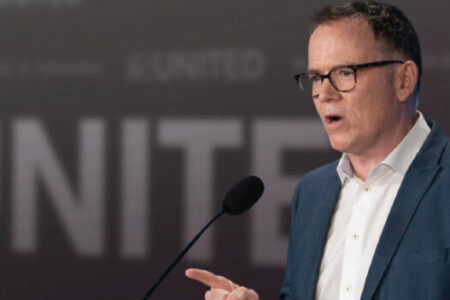COMMENT: Strategies
The story of the 2012 US presidential election we should pay attention to in Canada is not the performance of the candidates; it is a story of mathematics. The star in this regard is Nate Silver who predicted the outcome of the election with uncanny accuracy. Most pollsters held that the election was too close to call. Silver, who is not a pollster but a statistician and mathematician, devised a formula using polling data produced by others to accurately predict the outcome of the vote in every state.
Silver’s overall prediction was that Obama had a better than 90 percent chance to be reelected. Some political observers have expressed concern that the ability to predict election outcomes with such accuracy may hurt democracy. They fear that citizens may not bother to make the effort to vote if the outcome of an election can be accurately predicted in advance. The concern is valid, but I am more concerned about the influence polling and Silver’s formula will have on the strategies of Canada’s political parties.
Obama’s team applied refined polling strategies in swing states such as Ohio. They used its sophisticated polling data to develop, shape, and refine its campaign message to address those uniquely local aspects of the broad national issues. Thus, while a national objective may be job creation, local campaigns are crafted to address and highlight uniquely local employment related messages. The objective is for individual voters to interpret a party’s broad national policy statement from a close to home and easily understood perspective. When a political party incorporates an Obama-style strategy with Silver’s formula in a national campaign, it can measure with a high degree of accuracy the effectiveness of the strategy. It will know which electoral districts may be ignored and thus direct all resources to key districts to secure a victory.
Canada’s electoral system cannot be compared to that of the United States. There the two branches of the legislative and the head of the executive are elected separately. We elect only half of the legislative arm of government, the House of Commons. The party who controls the House of Commons controls it all. Our democracy is further marginalized by our electoral system which is not concerned about the will or the mood of the majority; all the rewards go to the leader.
Over the span of the past three elections, from 2004 to 2008, voter support for the Conservative Party increased by 3.3 percent, from 36.3 to 39.6 percent. With those numbers the party’s representation in the House of Commons increased by 33.9 percent, giving it eleven seats more than needed for a majority in one legislative arm and full control of government overall.
The 2008 election results were not an aberration. In 1993 the Liberal Party won a nine seat majority with only 38.5 percent of voter support. Notwithstanding differences in our systems, there is nothing to prevent the application of Obama’s campaign segmentation strategy with Silver’s voter intent monitoring formula in Canada. The consequence of doing so has the potential to reduce our already marginal democracy to tokenism. Obama’s campaign segmentation strategy combined with Silver’s voter intent monitoring formula applied in Canada will enable political parties to accurately identify swing ridings, ignore ridings where support is either assured or negligible, and focus individualized campaign messages on a few swing ridings. Voter response in these swing ridings will be monitored using Silver’s formula.
Applying such sophisticated campaign strategies to our system will make parliamentary majorities possible with the support of as few as one third of the voters, thereby reducing democracy to mere symbolism.






















